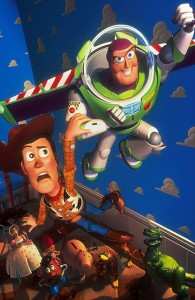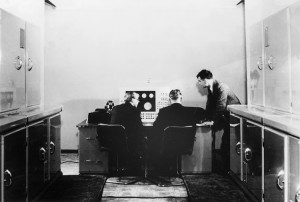A. M. Turing Award
Monday, April 13th, 2020April 13, 2020
In late March, the Association for Computing Machinery (ACM) in New York City named the computer scientists Ed Catmull and Pat Hanrahan as the recipients of the annual A. M. Turing Award. The award is given to one or more individuals each year in recognition of contributions of lasting importance in the field of computing. Catmull and Hanrahan were honored for their work on three-dimensional (3-D) computer graphics and the impact of these techniques on computer-generated imagery (CGI). Their work has greatly influenced the motion picture and video game industries as well as the fields of augmented reality and virtual reality.

The 1995 film Toy Story used 3-D animation software created in part by Ed Catmull and Pat Hanrahan, the winners of this year’s A. M. Turing Award. Credit: © Walt Disney Pictures/ZUMA Press
Ed Catmull is a former president of Pixar and Disney Animation Studios. Pat Hanrahan, a founding employee at Pixar, is a professor in the Computer Graphics Laboratory at Stanford University. Catmull and Hanrahan helped guide Pixar through its early years (the animation studio was created in 1986), and they helped create the “RenderMan” graphics system that gives two-dimensional images a 3-D appearance.
Under Catmull, Pixar used the RenderMan software to produce the motion picture Toy Story (1995), the first fully computer-animated feature film. Pixar then used RenderMan in a number of highly successful Toy Story sequels and other animated films. RenderMan software has also been used in numerous video games and in such blockbuster live-action films as Avatar, Titanic, and movies in the “Lord of the Rings,” “Jurassic Park,” and “Star Wars” series.

Alan M. Turing (at right) was an English mathematician and computer pioneer. He made important contributions to the development of electronic digital computers. Credit: Heritage-Images/Science Museum, London
The A. M. Turing Award is named after Alan Mathison Turing, a British mathematician and computer pioneer. Turing made key contributions to the development of electronic computers, including his work helping to build the first British electronic digital computer. In 1950, he proposed a test for determining if machines might be said to “think.” This test, now called the Turing test, is still central to discussions of artificial intelligence.
The first Turing Award was given to the American computer scientist Alan J. Perlis in 1966 for his role in developing influential computer-programming techniques. Since then, an award has been given every year. As of 2014, the award includes a $1 million cash prize. Catmull and Hanrahan are scheduled to receive the A.M. Turing Award at ACM’s annual awards banquet on June 20, 2020, in San Francisco, California. That event is contingent, of course, on the containment or continued spread of the ongoing COVID-19 pandemic.


